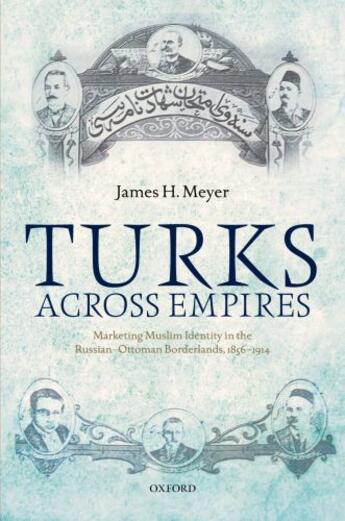Des idées de lecture pour ce début d'année !
Passionné(e) de lecture ? Inscrivez-vous
gratuitement ou connectez-vous pour rejoindre la
communauté et bénéficier de toutes les fonctionnalités du site !

Turks Across Empires tells the story of the pan-Turkists, a group of Muslim activists who became involved in a wave of revolutions taking place in Russia (1905), Iran (1906) and the Ottoman Empire (1908). It studies the activities of three men, Yusuf Akcura, Ismail Gasprinskii, and Ahmet Agaoglu, who were part of a circle of Muslim writers and activists from Russia that was formed in Istanbul during the Young Turk era (1908-1918). The volume demonstrates how theirs is part of a much larger history of trans-imperial Muslims, the Russian-Ottoman borderlands, and the late imperial age.
James Meyer examines international Muslim activist politics within its broader context of the events taking place at that time in the Russian-Ottoman borderlands: mobility, revolution, and the politicization of identity. These issues connect the pan-Turkists to the communities in which they lived in Russia, as well as to a larger population of trans-imperial Muslims living between the two empires.
In particular, Turks Across Empires focuses upon three developments occurring between the middle of the nineteenth century and the First World War: an expansion in mobility, the outbreak of revolution, and a deep politicization of civilizational identity. Because these points are also characteristic of the post-Cold War era, Meyer argues that the experiences surrounding the pan-Turkists can provide valuable lessons for the present day. Drawing upon Russian and Turkic-language sources from Istanbul and a variety of Russian regions, this volume provides powerful insights into the nature of Russian-Ottoman interactions, during a time rich with possibility and change.
Il n'y a pas encore de discussion sur ce livre
Soyez le premier à en lancer une !

Des idées de lecture pour ce début d'année !

Si certaines sont impressionnantes et effrayantes, d'autres sont drôles et rassurantes !

A gagner : la BD jeunesse adaptée du classique de Mary Shelley !

Caraïbes, 1492. "Ce sont ceux qui ont posé le pied sur ces terres qui ont amené la barbarie, la torture, la cruauté, la destruction des lieux, la mort..."